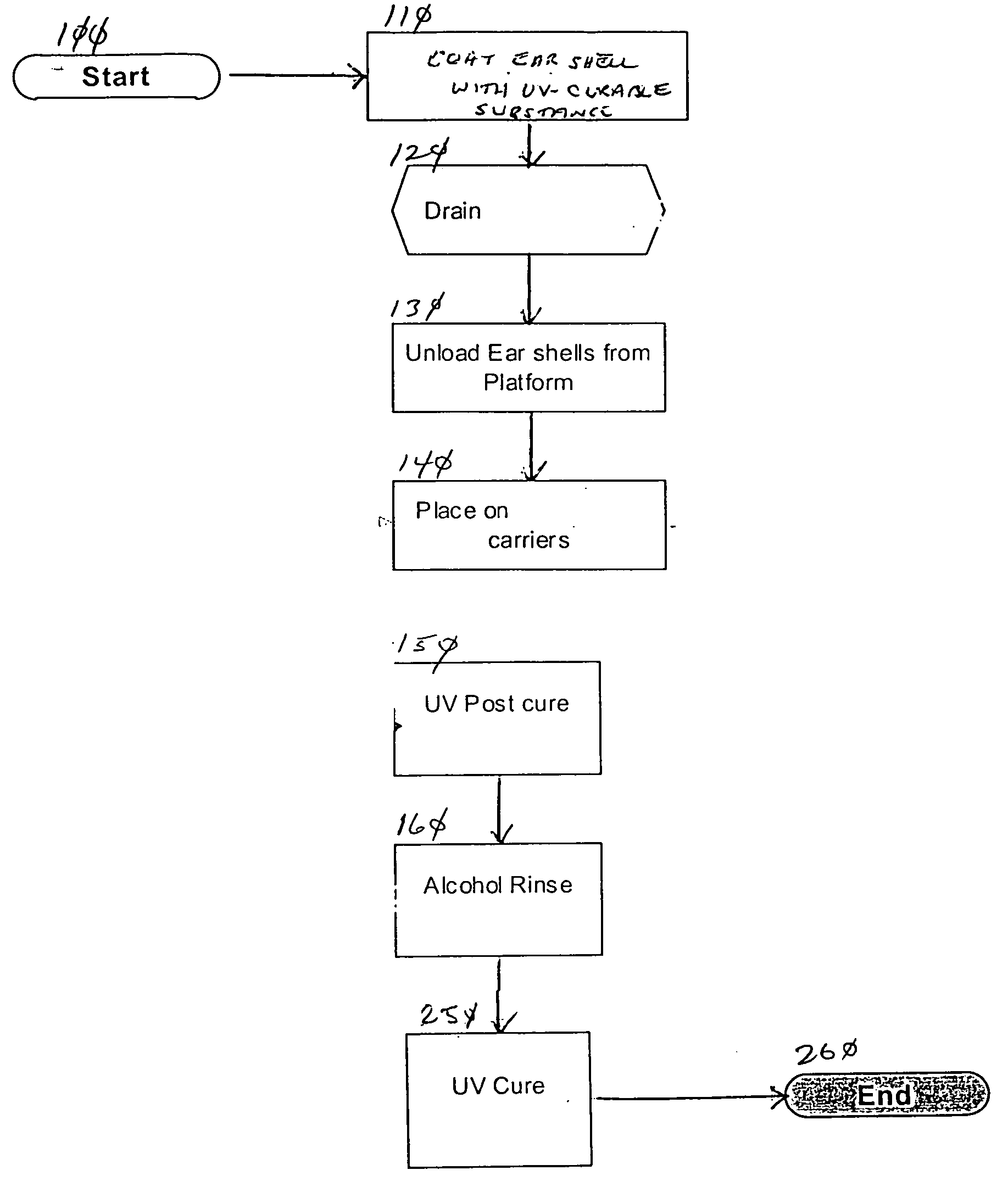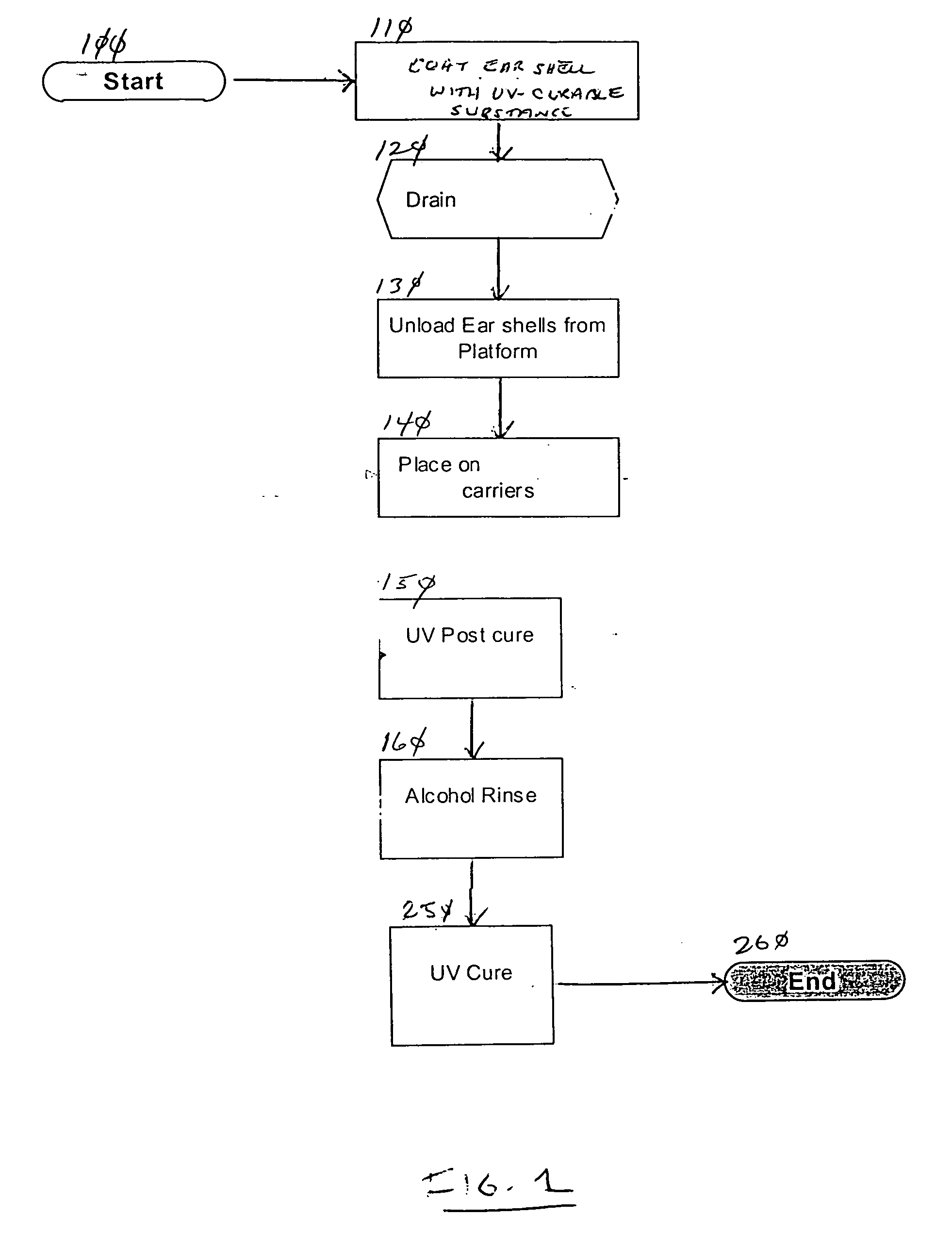Method of coating an SLA part
a technology of sla parts and ear shells, applied in the field of stereolithography methods, can solve the problems of inconsistency in the removal rate of materials, poor customer satisfaction, and discoloration of the appearance and achieve the effects of less susceptible to build-up, high gloss exterior finish, and fast build-up times of the ear shell
- Summary
- Abstract
- Description
- Claims
- Application Information
AI Technical Summary
Benefits of technology
Problems solved by technology
Method used
Image
Examples
experiment 1
[0030] Hearing aid ear shells manufactured through stereo-lithography were placed on the platform of the SLA apparatus and submerged in the SLA resin. The platform was then raised, allowing the SLA resin to drain off the ear shells. The shells were allowed to drain for 5 to 10 minutes. Forceps were then used to grip the supports of the ear shells, and the ear shells were placed on a carrier and exposed to UV light for about 3 minutes. The ear shells were then placed in an ultrasound alcohol bath for about 2 minutes. The ear shells were then removed from the alcohol bath. Finally, the ear shells were cured in UV light for an additional 30 minutes.
[0031] The resulting ear shells had a smooth, high gloss exterior finish. If a microscopic examination were to be made of the ear shell, the exterior would appear seamless, since the same SLA resin was used to coat the ear shells as was used to manufacture them.
PUM
| Property | Measurement | Unit |
|---|---|---|
| gloss | aaaaa | aaaaa |
| thickness | aaaaa | aaaaa |
| ultrasound | aaaaa | aaaaa |
Abstract
Description
Claims
Application Information
 Login to View More
Login to View More - R&D
- Intellectual Property
- Life Sciences
- Materials
- Tech Scout
- Unparalleled Data Quality
- Higher Quality Content
- 60% Fewer Hallucinations
Browse by: Latest US Patents, China's latest patents, Technical Efficacy Thesaurus, Application Domain, Technology Topic, Popular Technical Reports.
© 2025 PatSnap. All rights reserved.Legal|Privacy policy|Modern Slavery Act Transparency Statement|Sitemap|About US| Contact US: help@patsnap.com


